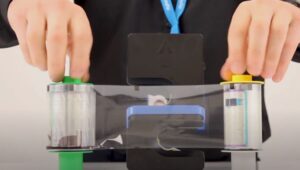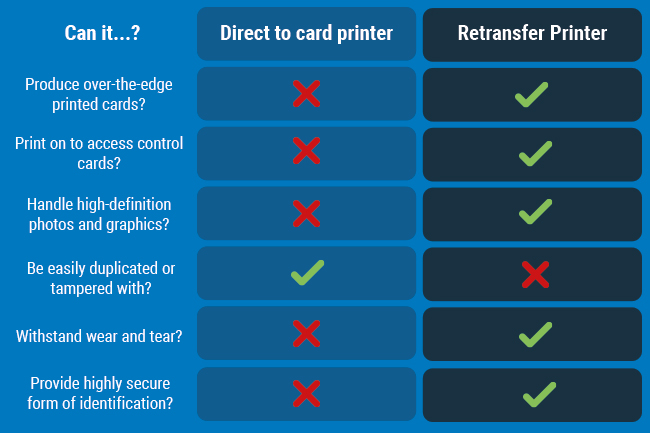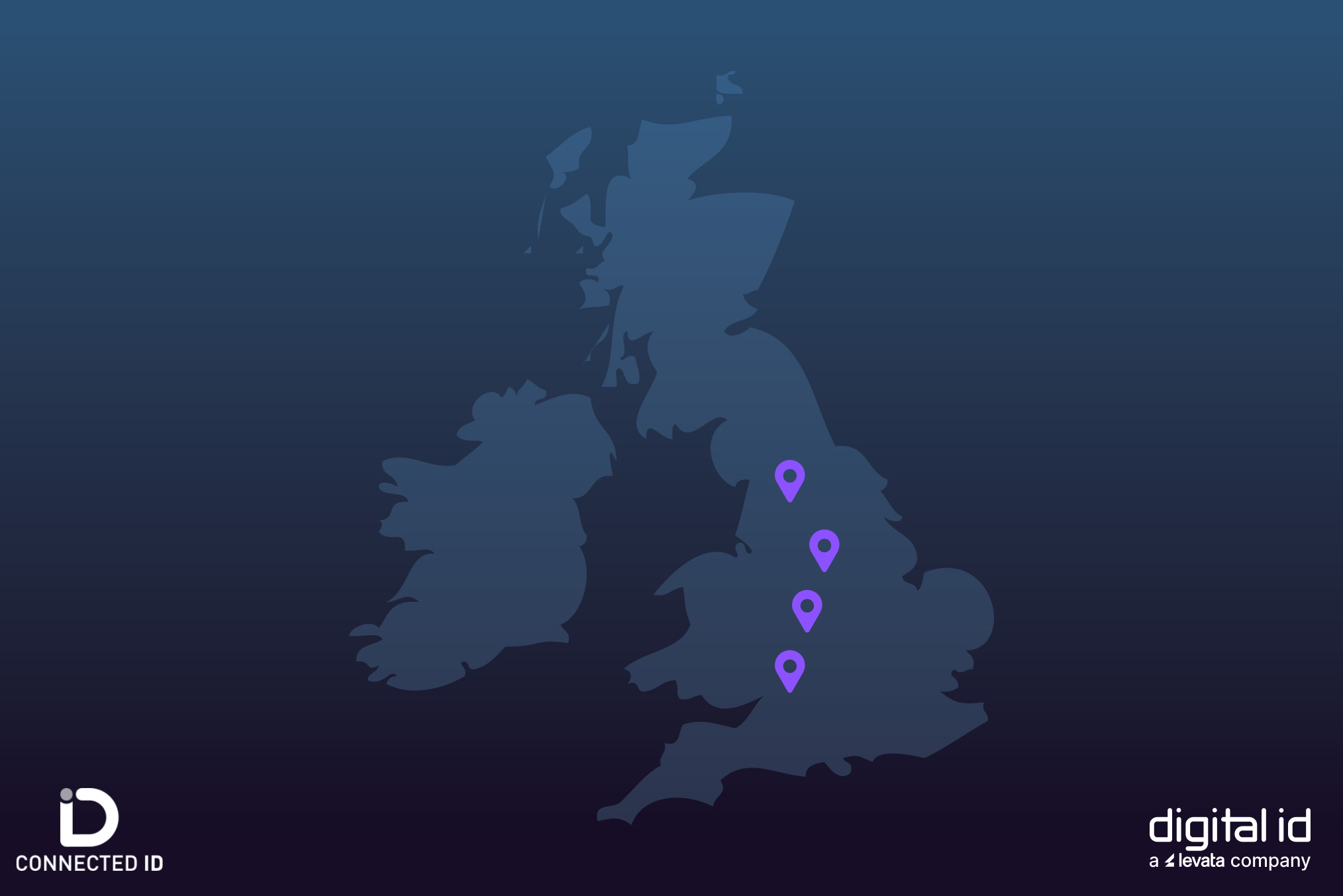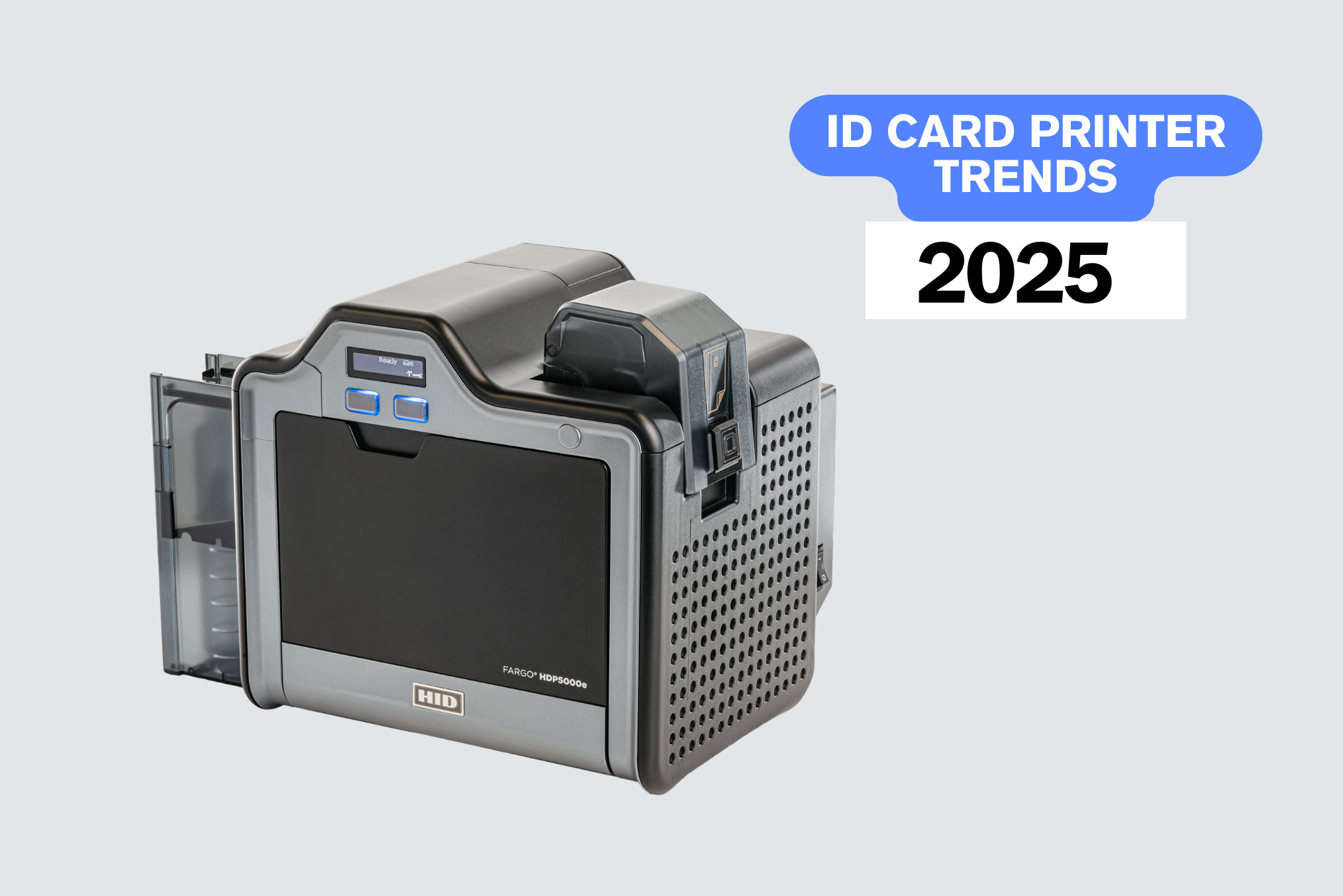What’s the difference between a direct-to-card and retransfer printer? It’s one of the most common questions we get asked here at Digital ID so we thought we’d take a deeper look at the differences and individual benefits of these two printer types.
In this guide, we’ll give you an overview of the key differences between these two printer technologies, and provide a handy table for quick reference.
Direct-to-card vs Retransfer: What’s the difference?
The difference between direct-to-card and retransfer ID card printing lies in the way the different machines print text and detailed images onto the surface of a card. A direct-to-card printer uses a printer ribbon and printhead which come in direct contact with the card surface to print the card design onto the card.
Conversely, a retransfer printer prints the card design onto an overlay film via the ribbon. The overlay film is then adhered to the card’s surface by using a mixture of pressure and heat to create a true over-the-edge printed card.
Sound complicated? It isn’t really! Check out our video below to see in detail how these printing processes work.
Because of the way reverse transfer printing works, you can confidently print onto the uneven surfaces of access control and smart cards without risking any print errors or damage to the print head. Direct-to-card printing is more cost-effective, with edge-to-edge printing to apply ink directly onto the surface of the card.
Direct-to-card printing process explained

Also known as DTC or dye-sublimation printers, direct-to-card printers are the most common form of card printer. The printhead on a direct-to-card printer contains thousands of pixels that print directly onto ID cards to produce crisp, clear photos and text.
One drawback that comes with direct-to-card ID card printers is the tiny white border left around the edge of the card after printing – this can be frustrating if you’ve got a colourful design or want your card to look as professional as possible. Plus points of direct-to-card printers include the ability to print large quantities of cards in a short amount of time. They are also more cost-effective to purchase than reverse transfer printers.
For more on how direct-to-card printers work and if they’re right for your printing needs, you can read our detailed guide to the DTC printer here.
Retransfer printing process explained

Retransfer ID card printers are a newer technology. Using a two-step process, these machines print your ID card design onto an overlay film, this clear film then adheres to the surface of the card itself.
The benefits of using a retransfer printer include the ability to print with full card coverage, meaning no pesky white border. Retransfer printers can also print safely onto access control cards and cards with an uneven surface because the printhead doesn’t come into direct contact with the card surface.
Read our retransfer card printer guide here to find out more about the benefits of reverse transfer printing and the retransfer process.
The key differences

For easy reference, we’ve put together a little table to highlight the key differences. This should give you a good indication of the type of printer you require and which will fit the bill best.
More costly than their direct-to-card counterparts, retransfer printers offer higher print quality, versatility in terms of the card surfaces they are able to print onto, and enhanced card security. A direct-to-card printer will produce high quality printed cards but, with fewer encoding options available and difficulty printing properly onto access control and smart technology cards they are less secure than retransfer machines.
If you’d like to learn more about how direct-to-card and retransfer printers work, you can read our guide on how plastic card printers work.
Ready to decide?
Whether your ID card production setup requires retransfer or direct-to-card printing, you can browse our full range of ID card printers here.
If you would like to discuss and decide which of these ID card printer technologies will be best suited for your card printing needs, you can speak to one of our printer experts by calling 0800 988 2095.



